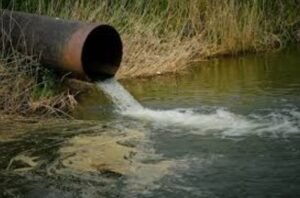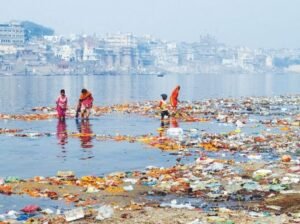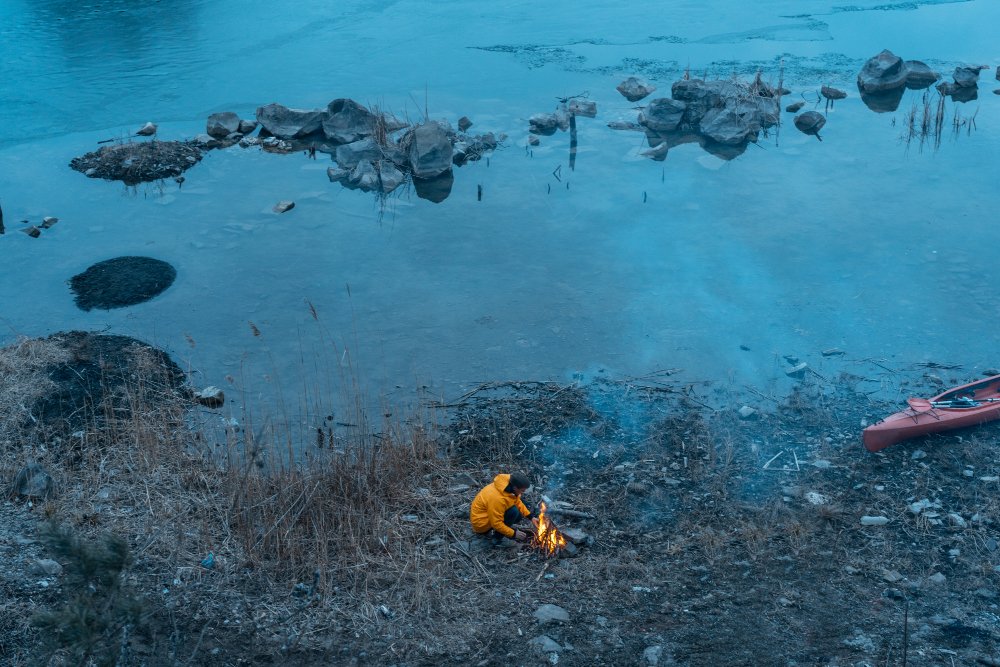The Ganga River, also known as the Ganges, is one of the most iconic rivers in the world. It provides water, livelihood, and spiritual significance to over 400 million people across northern India. However, in recent decades, the river has become heavily polluted, posing a serious threat to both people and nature.
Ganga river pollution is a growing concern due to the unchecked discharge of sewage, industrial effluents, plastic waste, and religious offerings. As the population and urbanization along the river increase, so does the scale of contamination.

Major Causes of Pollution in the Ganga River
Understanding the causes of pollution in the river Ganga is key to finding long-term solutions. Here are the primary contributors:
1. Industrial Waste
Several industries located along the riverbanks — particularly in Kanpur, Varanasi, and Patna — discharge chemical-laden waste directly into the river. This includes:
- Heavy metals
- Dyes and chemicals from tanneries and textile units
- Toxic effluents without adequate treatment

2. Domestic Sewage
More than 3 billion liters of untreated sewage are released into the river every day. Many towns and cities lack efficient sewage treatment plants, leading to direct discharge into the river system.

3. Solid Waste and Plastics
Massive quantities of plastic bags, bottles, food wrappers, and other solid waste are dumped into the river daily. This non-biodegradable waste blocks water flow, harms aquatic life, and contaminates the ecosystem.

4. Religious and Cultural Activities
Practices like idol immersion, floating flowers, and disposal of cremation remains in the river add significant biological and chemical pollutants, including ash, paint, and organic waste.

5. Agricultural Runoff
Fertilizers and pesticides used in farms often wash into the river through rainwater, leading to chemical contamination and reduced oxygen levels in the water.

Effects of Water Pollution in the Ganga River
The impact of water pollution in the Ganga River is both environmental and social. It includes:
- Health hazards: Millions use the river for drinking, bathing, and cooking, exposing themselves to diseases such as cholera, dysentery, skin infections, and other waterborne illnesses.
- Loss of biodiversity: Pollution has endangered aquatic species, including the Ganges river dolphin and several types of fish and turtles.
- Damage to livelihoods: Fishermen, farmers, and communities that depend on the river are losing their source of income due to declining water quality.
- Cultural erosion: The spiritual importance of the river is being undermined by the physical degradation of its waters.
Government Initiatives to Tackle Ganges River Pollution
Recognizing the scale of the problem, both central and state governments have taken steps to reduce Ganga river pollution.
1. Namami Gange Mission
Launched in 2014, this program focuses on cleaning the Ganga through:
- Installation of sewage treatment plants
- River surface cleaning projects
- Industrial pollution monitoring
- Public awareness and involvement campaigns
2. Ganga Action Plan (GAP)
An earlier initiative from the 1980s aimed to improve water quality but failed due to poor execution and lack of infrastructure. Learnings from GAP have influenced newer policies under Namami Gange.
3. Legal Regulations and CPCB Monitoring
The Central Pollution Control Board (CPCB) now monitors pollution levels and imposes penalties on industries violating environmental standards. Efforts are also being made to ensure biodegradable and eco-friendly practices are adopted wherever possible.
Despite these actions, enforcement gaps, lack of coordination, and slow infrastructure development continue to challenge real progress.
What Can Be Done? Citizen Action Against Ganga Pollution
Public participation is critical to cleaning the Ganga. Some actions individuals and communities can take include:
- Avoid dumping waste into the river or its surroundings
- Use eco-friendly alternatives during festivals and rituals
- Educate others about the risks of river pollution
- Participate in or support river clean-up initiatives
- Pressure local authorities for better waste management
A Sustainable Alternative: Biodegradable Plastic Solutions
One of the major contributors to the river’s pollution is non-biodegradable plastic. These materials do not break down naturally, causing long-term damage to the water ecosystem.
Biodegradable plastics offer a meaningful alternative. When properly certified and produced under environmental safety standards, biodegradable plastic:
- Decomposes naturally without leaving toxic residue
- Reduces dependency on harmful single-use plastic
- Is suitable for packaging, shopping bags, and food delivery
By shifting towards such alternatives, especially in urban centers and religious towns along the Ganga, we can significantly reduce plastic-related pollution.
Conclusion
The Ganga is more than a river; it is a cultural, ecological, and economic lifeline. Yet, ganga river pollution continues to threaten its health. Understanding the causes of pollution in the river Ganga — from industrial discharge to plastic waste — is the first step. While government initiatives like Namami Gange offer a strong foundation, long-term success depends on collective action and sustainable choices.
Switching to eco-friendly products, especially biodegradable plastics, can be a simple yet powerful way to support the Ganga’s revival. It’s not just about cleaning a river — it’s about securing the future of generations who depend on it.
FAQs on Ganga River Pollution
- What is the main cause of Ganga river pollution?
The primary cause of pollution in the river Ganga is the discharge of untreated domestic sewage and industrial effluents directly into the river. Other major contributors include plastic waste, religious offerings, agricultural runoff, and poor waste management practices along the riverbanks.
- How does Ganges river pollution affect human health?
Ganges river pollution poses serious health risks as millions of people use its water for drinking, bathing, and cooking. Contaminated water can lead to diseases like cholera, dysentery, skin infections, and other waterborne illnesses.
- What role does plastic waste play in water pollution in Ganga river?
Plastic waste, including bags, bottles, and packaging, is a major source of water pollution in the Ganga river. Since most plastics are non-biodegradable, they remain in the water for decades, harming aquatic life and disrupting the natural ecosystem.
- What government initiatives are in place to reduce Ganga river pollution?
The Indian government has launched programs like the Namami Gange Mission and earlier initiatives such as the Ganga Action Plan to tackle Ganga river pollution. These focus on building sewage treatment plants, monitoring industrial waste, cleaning river surfaces, and promoting public awareness.
- Can biodegradable plastics help reduce pollution in the Ganga?
Yes. Switching to biodegradable plastics can significantly reduce Ganges river pollution caused by single-use plastics. These materials break down naturally, leaving no toxic residue, and can be used for packaging, shopping bags, and food containers.
- How can citizens contribute to reducing pollution in the Ganga river?
Individuals can help by avoiding dumping waste into the river, using eco-friendly products during festivals, supporting clean-up drives, and pressuring local authorities to improve waste management systems. Public participation is crucial to tackling water pollution in the Ganga river.


